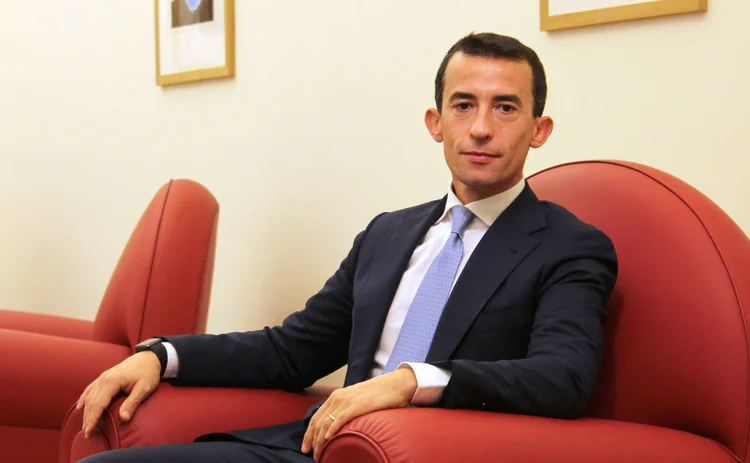
Bank deal of the year: Banca IMI
Energy Risk Awards 2020: ESG metrics are increasingly being tied to corporate lending, but Banca IMI takes this to the next stage with its ESG-linked interest rate swap

Companies that perform well against environmental, social and governance (ESG) metrics are increasingly recognised as promising higher returns and representing lower risk than firms without these goals. This perception has triggered enormous inflows into sustainable equity funds and the explosion of ESG-linked lending, whether green bonds that finance defined projects or the burgeoning green corporate loan market.
Last year, the issuance of sustainability loans (which includes social as well as green loans) jumped 168% to $122 billion, according to figures from Bloomberg New Energy Finance. These loans offer lenders reduced interest rates if the borrower hits ESG key performance indicators (KPIs), incentivising improved corporate sustainability.
Italy’s Banca IMI, the investment banking division of the Intesa Sanpaolo Group, has taken that concept to the next level with a sustainable interest rate hedge it wrote for Italo, the Italian railway operating company, majority-owned by investment manager Global Infrastructure Partners.
The deal, an interest rate swap, hedges the portion of a total €1.1 ($1.25) billion three-year syndicated corporate loan that was offered by Banca IMI.
“In our view, a company whose business decisions are inspired by sustainability principles will be perceived as a better counterparty risk, and consequently have more streamlined access to funding compared with those corporate clients less involved in strong ESG practices: in other words, it will be more attractive to investors,” says Stefano Rivellini, global head of corporate solutions at Milan-based Banca IMI.
However, while a growing number of banks are extending the sustainability-linked features of the loan to the derivatives space, “the utilisation of hedging instruments linked to ESG loans doesn’t seem to have a clear and unambiguous application”, Rivellini says. “Should the hedge be aimed at offsetting setbacks on the loan indexation when ESG principles aren’t abided by? Or, rather, should the mechanism generate a further incentive to encourage stronger ESG performances? We intend to offer hedging solutions that encourage the company to become more ESG-compliant.”
Fundamentally, the ESG Fixed Payer Swap is a standard floating-to-fixed interest rate swap, where the client pays the fixed customer benchmark rate to Banca IMI, receiving the bank’s target rate. As with a conventional floating-to-fixed swap, the client is protected should Euribor rise over time.
However, the difference is that, at periodic checkpoint dates – in this deal, every 12 months – if Italo provides evidence that the loan ESG KPIs targets have been hit, the customer benchmark rate thereafter steps down. In Italo’s case, three KPIs are monitored. If only one goal is achieved, the customer benchmark rate stays the same; if the goal is achieved for two KPIs, the customer benchmark rate is reduced by 25 basis points and, if met for all three KPIs, a 50bp reduction is won in the running cost of the swap.
Companies can report that they are compliant with ESG policies not only through their lending, but also via their risk management policies
Stefano Rivellini, Banca IMI
“The mechanism is asymmetric in that it rewards virtuous ESG practices, whereas, on the other hand, it doesn’t penalise the client – let alone favour the hedge provider – should the prescribed ESG goals be missed,” adds Rivellini.
“The way we look at the product is that Banca Intesa Sanpaolo is giving the client a further incentive, through its risk management procedures, to become ESG-compliant,” he says.
In addition to the potential benefit that such an ESG-linked swap can have for a company’s funding costs, it can also send a strong signal about its commitment to sustainability and, says Rivellini, “Companies can report that they are compliant with ESG policies not only through their lending, but also via their risk management policies, which is extremely appealing for investors looking at their debt or their equity.”
Rivellini adds that, as far as he is aware, Banca IMI is the first European bank to offer ESG-asymmetric linked swaps – a situation that is unlikely to last. “We have taken tons of calls from clients asking if they can replicate the structure on their exposures,” he says, adding that the bank is exploring the possibility of offering forex and commodity hedges linked to ESG KPIs. “We intend to create a standard in the market, a framework for hedging products that delivers tangible benefits to the company that achieves ESG targets.”
Only users who have a paid subscription or are part of a corporate subscription are able to print or copy content.
To access these options, along with all other subscription benefits, please contact info@risk.net or view our subscription options here: http://subscriptions.risk.net/subscribe
You are currently unable to print this content. Please contact info@risk.net to find out more.
You are currently unable to copy this content. Please contact info@risk.net to find out more.
Copyright Infopro Digital Limited. All rights reserved.
You may share this content using our article tools. Printing this content is for the sole use of the Authorised User (named subscriber), as outlined in our terms and conditions - https://www.infopro-insight.com/terms-conditions/insight-subscriptions/
If you would like to purchase additional rights please email info@risk.net
Copyright Infopro Digital Limited. All rights reserved.
You may share this content using our article tools. Copying this content is for the sole use of the Authorised User (named subscriber), as outlined in our terms and conditions - https://www.infopro-insight.com/terms-conditions/insight-subscriptions/
If you would like to purchase additional rights please email info@risk.net
More on Commodities
Energy Risk 2024 Software Rankings: IT demands increase amid rising risk
Heightened geopolitical and credit risk increase requirements on commodities software
Energy Risk Asia Awards 2023: the winners
Winning firms demonstrate resiliency and robust risk management amid testing times
ION Commodities: addressing the market’s recent pain points
Energy Risk Software Rankings winner’s interview: ION Commodities
Energy Risk Commodity Rankings 2023: adapting to new market dynamics
Winners of the 2023 Commodity Rankings provided reliability when clients faced extreme change
Energy Risk Software Rankings 2023: managing uncertainty
Unpredictable markets make CTRM software choices key
Navigating the volatility and complexity of commodity markets
Commodity markets have experienced significant challenges since the Covid-19 pandemic, the conflict in Ukraine and the subsequent sanctions imposed on Russia. These unprecedented events have caused fluctuations in supply and demand, disrupted global…
Energy Risk Asia Awards 2022
Recognising excellence in energy risk management
Market shrugs off EC’s plan to change gas benchmark
Dutch TTF prices unmoved, as market participants say they are “not taking it seriously”







